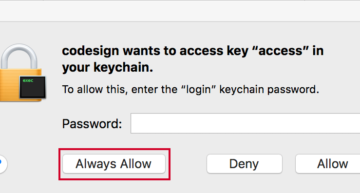5 Practical SEO Tips to Increase Traffic.
Quick Summary of Contents
- 1 Not Going Cheap on Hosting Architecture.
- 2 Focus on Profitable, High-Converting Keywords.
- 3 Dotting the I’s and Crossing the T’s with Unique and Value-Add Content.
- 4 Add an Identity to Your Search Engine Results.
- 5 Measure your way to more traffic, customers, and revenue.
- 6 Practical Search Engine Optimization Conclusion.
Practical search engine optimization (SEO) tips that drive bottom-line results are hard to come by these days, depending upon the following:
- who you ask.
- what topics you’re in search of.
- how do you go about implementing and executing tips?
From off-site optimization tips, such as effective link-building strategies and social signals, to on-page optimization tips, such as keyword focus and proper meta and page tag usage, there are countless search engine optimization techniques and strategies to focus on.

Most website owners want to know how to increase organic search traffic.
Oftentimes, they base their search engine optimization techniques and strategies on what will bring the biggest bang for the buck in the shortest amount of time.
Yes, I know this is a broad stroke of the brush.
In today’s post, I hope to provide you with our top 5 practical SEO tips that are proven to help your website to generate greater customer growth and revenue.
There are many more, but focusing on these 5 practical SEO tips will surely help you get a firm foundation to dive deeper in implementing and executing more search engine optimization techniques.
Let’s get started!
Not Going Cheap on Hosting Architecture.
 If you must choose a shared hosting plan, then do so. Yes, Shared Hosting plans are the cheapest, but they are also the slowest because your website shares the same resources with thousands of websites.
If you must choose a shared hosting plan, then do so. Yes, Shared Hosting plans are the cheapest, but they are also the slowest because your website shares the same resources with thousands of websites.
Consider not going cheap on a hosting architecture for your website, and choose a solid VPS hosting plan like the one offered by A2 Hosting and InMotion Hosting.
Selecting the right web hosting plan is an imperative consideration that businesses forget about until their website is hit with excessive downtime, which costs a business more in the long run.
Customers and search engines do not take too kindly to waiting on slow, unresponsive websites due to disreputable web hosting companies.
Be sure to select a reliable web hosting provider with WordPress Hosting plans that can provide a responsive, secure, redundant, and scalable architecture.
Personally, I tend to use the following web hosting providers in their respective order and based on varied experience:
- A2Hosting.com
- GoDaddy
- BlueHost
- HostGator
- 1And1.com
- InMotion Hosting
- MediaTemple
- Hosting24.com
- HostMonster
- DreamHost.com
And don’t forget to check the promo code page to help you save on domain, web, and email hosting services.
Nevertheless, selecting a reliable web hosting provider greatly gives your website a firm search engine optimization foundation to build upon.
In addition, your website must be responsive, easy to navigate, and offer value-add and search-friendly content.
Remember, your competition will gladly be ready and waiting to welcome new customers should your website not offer the above.
Focus on Profitable, High-Converting Keywords.
 As a part of your search engine optimization strategy, identify and focus on utilizing both head and tail keywords in your website’s content marketing strategy to rank well across search engines.
As a part of your search engine optimization strategy, identify and focus on utilizing both head and tail keywords in your website’s content marketing strategy to rank well across search engines.
And if you find yourself breaking the bank in an effort to play the “copycat “ or “me too” game of converting highly-competitive head keywords in pay-per-click advertising or optimizing your website, shift your focus to using less competitive and cost-effective long-tail keywords.
There is no reason to focus on head keywords when their conversion rate is less than 1 percent.
Again, save money by taking the road less traveled by focusing on converting highly-qualified customers using long-tail keywords in their search.
Give these affordable and easy-to-use keyword tools a try:
Dotting the I’s and Crossing the T’s with Unique and Value-Add Content.
 The future of SEO is about unique, value-add content, content, content!
The future of SEO is about unique, value-add content, content, content!
Just because you build content for content’s sake doesn’t mean customers will arrive ready to purchase.
Customers, as well as search engines, expect straight-to-the-point content with a clear value proposition.
Be sure the page content solves a customer’s challenges and is written for humans first and search engines last, including an effective call-to-action asking for the sale.
From video to articles to whitepapers to infographics to social media to webinars to case studies to blogging to how-to’s, give away the farm in valuable content helping customers to solve problems.
When you help customers solve problems with uniquely written, value-add content, customers will share the content with others creating natural links, and search engines will naturally promote your search engine rankings to the top.
Add an Identity to Your Search Engine Results.
 Have you looked at Google search results lately?
Have you looked at Google search results lately?
If not, go and run a quick search, and I’m sure you’ll see something to the extent of the image above.
You might already have seen some search results displayed by Google that show a photo of the author along with the link.
This unusual approach now gives you a competitive advantage to boost search engine rankings for your website.
Google Authorship is going to be a very promising platform for search engine optimization, increasing the chances for greater organic search traffic.
By establishing the credibility of your content, you make it quite valuable in the eyes of Google, and hence your website gets a chance to move up in the search results.
Forget about all those difficult SEO practices you haven’t implemented yet.
As a simple start, try Google Authorship to improve your Author Rank, build trust, create authority, and stop competition from stealing your work and customers.
And while you’re at it, be sure to be very active using your Google+ in addition to Google Authorship, as this will boost search engine rankings too.
Measure your way to more traffic, customers, and revenue.
Measure, measure, measure, and measure your search engine optimization efforts some more!
There is no need to want more traffic when a business is unable to measure and understand customers and their habits while on its website.
So many times, businesses either forget to measure, or we are measuring the wrong or many useless metrics.
 Don’t let this be your business.
Don’t let this be your business.
If you don’t use web analytics to measure the effectiveness of your website and search engine optimization efforts, then start today.
There are many tools out there on the market that are affordable and easy to use:
There is a variety of metrics to consider when trying to identify effective metrics to measure and execute against.
Below are recommended key metrics you will want to understand are:
- Average time spent on site and bounce rate
- A/B testing and setting conversion goals/paths
- Traffic sources and keywords converting the most customers
- Overall conversion rate
 Oh, one last but most important, though: be sure to have a clear call-to-action on web pages.
Oh, one last but most important, though: be sure to have a clear call-to-action on web pages.
If you don’t have a clear call-to-action on your web pages, how will the customer ever know what they’re to do once arriving, and more importantly, how will you generate greater customer growth and revenue?
I’ve had countless conversations with website owners with beautifully designed but not converting websites.
Most of these website owners were baffled by their dismal conversion or non-conversion until being shown that their website did not have a clear call-to-action to too many call-to-actions.
Again, be sure to have a clear call-to-action on web pages as a part of your search engine optimization strategy when creating page content.
Practical Search Engine Optimization Conclusion.
We only covered a few search engine optimization tips, but the mentioned tips are proven to help your website consistently generate greater customer growth and revenue.
This is just the tip of the iceberg when it comes to identifying, implementing, and executing practical search engine optimization techniques.
The 5 practical SEO tips outlined below are proven tips to jump-start consistent traffic for your website on your way to consistently generating greater customer growth and revenue.
- Not going cheap on the hosting architecture.
- Focusing on the right keywords.
- Dotting the I’s and crossing the T’s with uniquely written and value-add content without selling.
- Uniquely identify yourself and your brand.
- Measuring your SEO efforts.
Remember that failures are just as important as successes and that search engine optimization is an ongoing process and not a one-time investment or transaction.
Please share with us other search engine optimization tips your business has tried and had much success or failure.













[…] I mentioned in our recent post, 5 Practical SEO Tips to Increase Traffic, it is imperative for your business to start search engine optimization (SEO) on a firm foundation. […]
[…] optimization consultant or firm at some point to achieve higher search engine rankings and to increase website traffic. Most online businesses today have recognized the worth of ranking high in top search engines like […]
[…] the list goes on with other value-add content marketing strategies and techniques to help increase not only your website or blog’s search engine ranking, but also increase the […]